The Baths of Caracalla were a gigantic sports center of ancient Rome
Rich in marble, frescoes and mosaics, the Baths of Caracalla were a gigantic sports center, with hot and cold baths, swimming pools, saunas, gymnastics and meeting rooms embellished with domes, colonnades and gardens. Here, citizens loved to relax, play sports, meet for an appointment (a bit like what happens now in fitness centers or even in shopping centers). The baths were a unique complex in terms of size and decoration, these baths represent one of the best preserved large imperial buildings of antiquity.
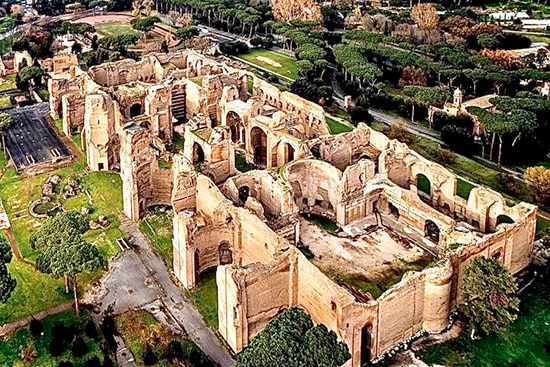
The baths of Caracalla or Antoniniane are still preserved for most of their structure and do not have modern buildings around them.
They were built between 212 and 216 AD. da Caracalla, son of Septimius Severus, who inaugurated the central building in 216 AD.
The rectangular plan is typical of the “great imperial baths”: a unique place where you can swim, exercise and care for the body, but also a place for strolling and studying. The central block is the one intended for the Baths: here are the calidarium, the tepidarium, the frigidarium and the natatio. On the sides, the two gyms and changing rooms. In the enclosure surrounding the central area there were the cisterns and the two symmetrical libraries, then the main entrances and the tabernae.
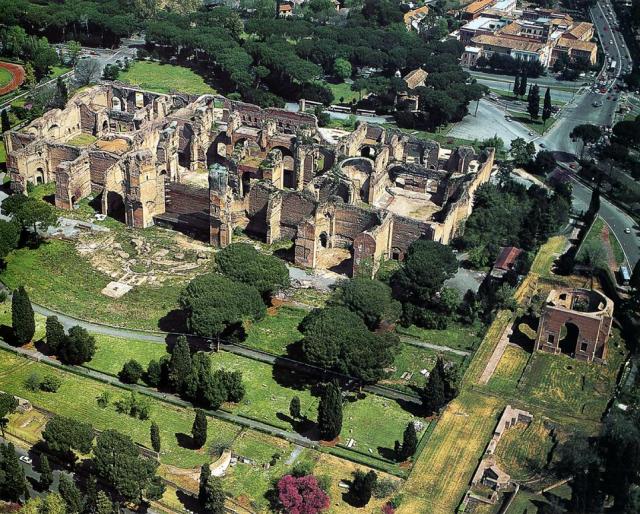
They were the most impressive ever built in the Roman Empire until the inauguration of the baths of Diocletian (306).
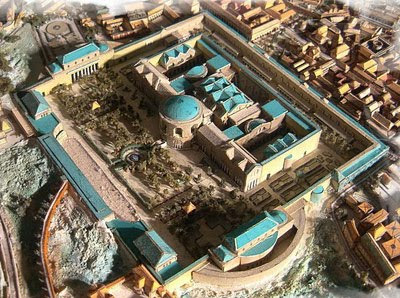
In the basement hundreds of slaves and skilled workers worked who made the technological machine of the Baths work. Preserved for about two kilometers, the basements were a labyrinth of tunnels where the timber deposits were located, the heating system, consisting of ovens and boilers, a water system, a mill and the Mitreo, one of the largest preserved in the city From Rome.
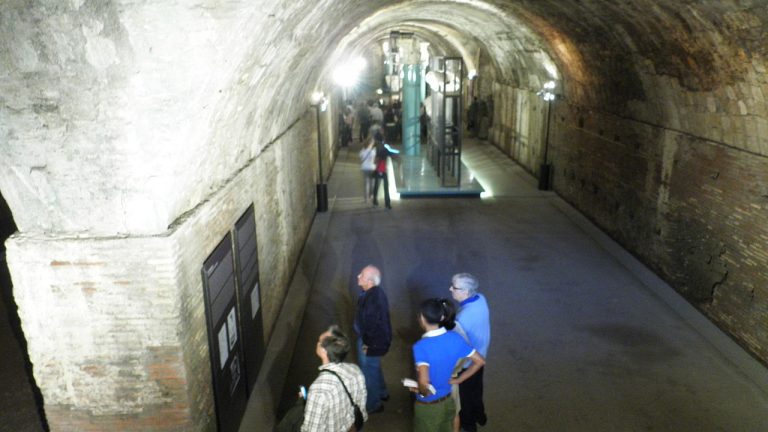
Abandoned and reused on various occasions also for residential purposes (the surrounding area was also used as a cemetery for burials), the thermal baths and the surrounding area were also exploited as an agricultural area and vineyard by the owners of nearby villas or ecclesiastical bodies and associations . From their abandonment in the sixth century they were used as a quarry to be reused for quality construction: the cathedral of Pisa and the basilica of Santa Maria in Trastevere contain, for example, architectural structures taken from the spa area.
The baths were the subject of excavation since the sixteenth century, when, under the pontificate of Pope Paul III, several statues, surviving medieval destruction, were found here. Many of these works, which entered the Farnese collection, were then brought to Naples. Among the most important pieces of sculpture found in the ruins of the baths is the Farnese Bull, now in the National Archaeological Museum of Naples.

The last entire granite column was removed from the “natatio” in 1563 to be donated by Pope Pius IV to the first Grand Duke of Tuscany Cosimo I de ‘Medici, who had it placed in the center of Piazza Santa Trinita in Florence, where it became the column of Justice.
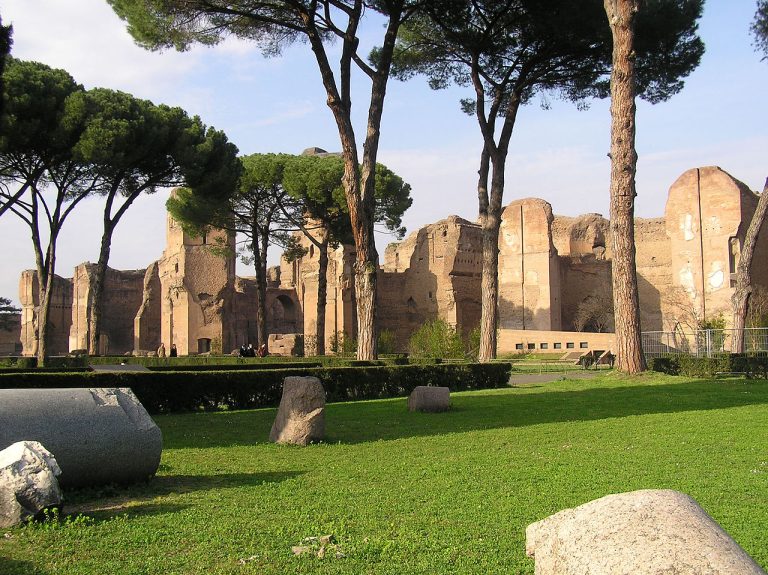
A few curiosities: during the 1960 Rome Olympics, the Baths of Caracalla hosted gymnastics competitions.
Due to the L’Aquila earthquake of April 6, 2009, the building suffered some minor damage.
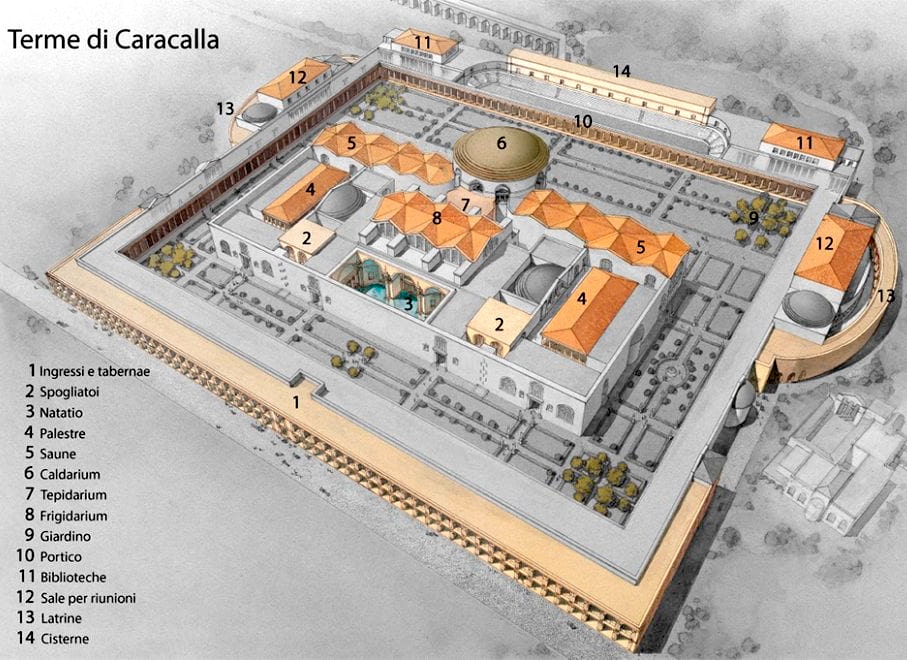
Since 1937, the central part of the spa has been used for concerts and open-air theatrical performances and in particular for the summer season of the Rome Opera.
